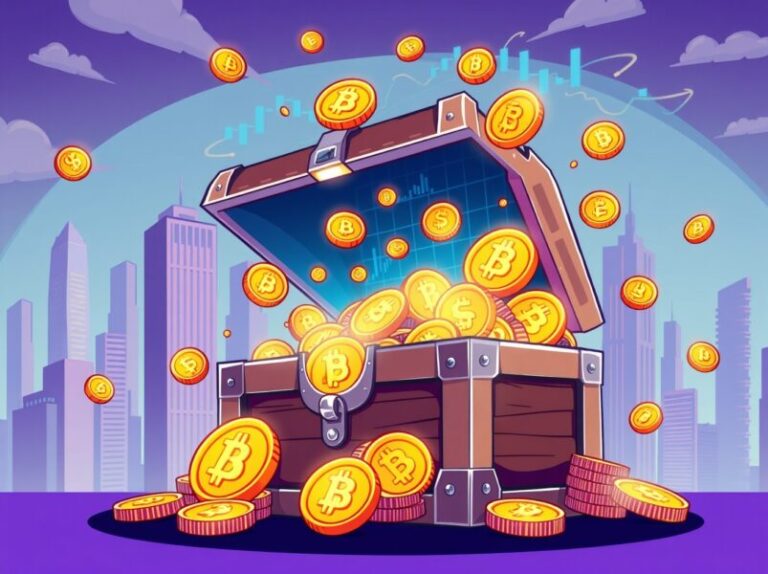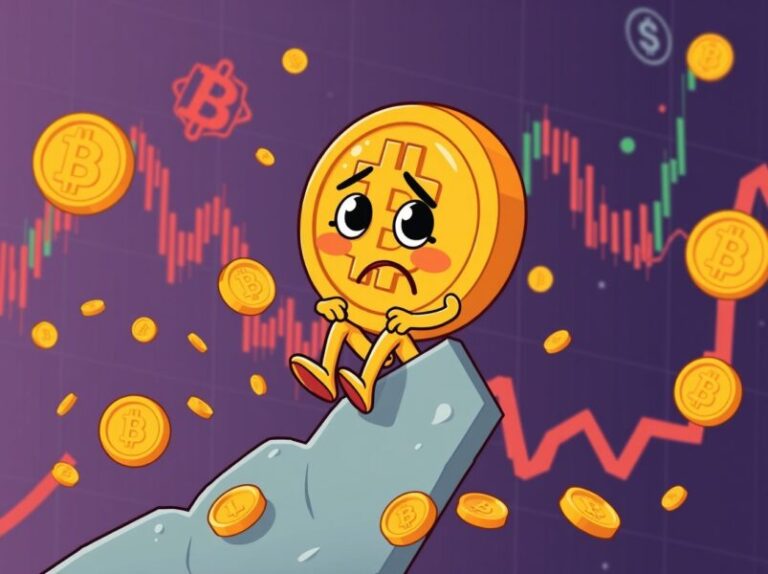BitcoinWorld Spot XRP ETF: Why BlackRock Remains Cautious, Unveiling 5 Key Factors The world of cryptocurrency investment is always buzzing with anticipation, especially concerning exchange-traded funds (ETFs). While Bitcoin and Ethereum have seen significant institutional interest, many wonder about the next big step. A spot XRP ETF is a hot topic, particularly regarding financial giants …
Spot XRP ETF: Why BlackRock Remains Cautious, Unveiling 5 Key Factors

BitcoinWorld

Spot XRP ETF: Why BlackRock Remains Cautious, Unveiling 5 Key Factors
The world of cryptocurrency investment is always buzzing with anticipation, especially concerning exchange-traded funds (ETFs). While Bitcoin and Ethereum have seen significant institutional interest, many wonder about the next big step. A spot XRP ETF is a hot topic, particularly regarding financial giants like BlackRock. Despite the fervent hope from the XRP community, BlackRock maintains a remarkably cautious stance. Why is one of the world’s largest asset managers not rushing into a spot XRP ETF application?
Limited Client Demand for XRP Investment?
One primary reason BlackRock remains reserved is the current landscape of client demand. BlackRock operates on a data-driven approach, and their internal metrics reveal a clear preference.
- Bitcoin and Ethereum Dominance: Institutional clients primarily express demand for Bitcoin (BTC) and Ethereum (ETH) products. These cryptocurrencies hold established market positions and clearer regulatory paths in some jurisdictions.
- Niche Interest: While some clients inquire about other digital assets, the broad, consistent demand seen for BTC and ETH is not yet present for XRP. This makes a significant XRP investment product less of an immediate priority for the firm.
Without robust client interest, the immediate business case for a new, complex product like a BlackRock XRP ETF becomes less compelling.
Navigating Regulatory Hurdles for a Cryptocurrency ETF
Regulatory uncertainty presents a significant challenge for any new cryptocurrency ETF. XRP’s situation is particularly complex. Ongoing legal battles surrounding XRP’s classification create an unpredictable environment that large institutions typically avoid.
- Legal Clarity Needed: BlackRock prefers clear and unambiguous regulatory frameworks before launching new products. The uncertainty around XRP’s status as a security or a commodity directly impacts the feasibility and risk profile of an ETF.
- Precedent Matters: The firm likely observes how existing regulatory decisions and potential future rulings could affect the broader digital asset market. They aim to ensure any new offering meets stringent compliance standards.
Until definitive regulatory clarity emerges, the path for a spot XRP ETF remains fraught with potential legal and compliance risks BlackRock is keen to avoid.
Is the Market Already Crowded for New Digital Asset Products?
The race for crypto ETFs is intensifying, and the market for digital asset products is becoming increasingly competitive. BlackRock might perceive the current environment as already saturated with applications, making a rushed entry less strategic.
- Numerous Applications: At least seven other firms have already filed applications for a spot XRP ETF. This indicates a crowded field.
- Observing Competition: BlackRock may prefer to wait and observe how these initial applications fare with regulators and how the market responds. This allows them to learn from others’ experiences without incurring the initial risks.
Entering a crowded market demands a unique selling proposition or a clear advantage, which may not be apparent for an XRP ETF at this juncture.
The Data-Driven Disconnect: XRP’s Market Share and Operational Costs
While the XRP community expresses immense enthusiasm, BlackRock’s decisions are rooted in hard data and financial viability. There appears to be a disconnect between community hype and the firm’s analytical approach.
- Smaller Market Share: Compared to Bitcoin and Ethereum, XRP holds a significantly smaller market share. This translates to less liquidity and potentially higher volatility, complicating ETF management.
- Higher Operational Costs: Managing an ETF for a less liquid or more volatile asset can incur higher operational costs, including custody, trading, and compliance. These costs might not be justified by potential revenue given XRP’s current market position.
BlackRock’s rigorous due diligence ensures any new product is viable and aligns with their long-term financial objectives, which a spot XRP ETF may not currently meet.
BlackRock’s Global Strategy and Regional XRP Demand
BlackRock operates on a global scale, and its product launches often align with its broader international strategy. This perspective reveals another factor influencing their cautious approach to an XRP investment product.
- Weaker Demand in Key Regions: While XRP sees considerable trading volume in Asia, BlackRock’s primary focus for new product launches might be in regions where XRP demand is comparatively weaker or where regulatory clarity is still evolving.
- Strategic Alignment: The firm prioritizes products that can achieve widespread adoption across its core markets. If XRP’s institutional demand is concentrated in specific, non-priority regions, it lessens the immediate incentive for a global firm like BlackRock to launch a dedicated ETF.
Ultimately, BlackRock’s strategic priorities play a crucial role in determining which digital asset products they pursue and when.
Concluding Thoughts: A Measured Approach to XRP
BlackRock’s measured approach to a spot XRP ETF is not a rejection of XRP itself, but rather a reflection of its meticulous, data-driven strategy. The firm prioritizes client demand, regulatory clarity, market conditions, and operational efficiency before diving into new investment vehicles. While the XRP community eagerly awaits, BlackRock continues to assess the landscape, ensuring any future moves are strategically sound and beneficial for its vast client base. This cautious stance underscores the complexities of launching new cryptocurrency products in an evolving financial ecosystem.
Frequently Asked Questions (FAQs)
Q1: What is a spot XRP ETF?
A spot XRP ETF is an exchange-traded fund that directly holds XRP, allowing investors to gain exposure to XRP’s price movements without directly owning the cryptocurrency itself.
Q2: Why is BlackRock being cautious about a spot XRP ETF?
BlackRock’s caution stems from several factors, including limited institutional client demand beyond Bitcoin and Ethereum, ongoing regulatory uncertainty surrounding XRP, a crowded market with many existing applications, and considerations regarding XRP’s market share and operational costs.
Q3: How does regulatory uncertainty affect a BlackRock XRP ETF?
Regulatory uncertainty, particularly the unresolved legal status of XRP in the US, creates significant risks for financial institutions. BlackRock prefers clear regulatory frameworks to ensure compliance and minimize legal liabilities for any new cryptocurrency ETF.
Q4: Does BlackRock’s caution mean they will never launch an XRP ETF?
Not necessarily. BlackRock’s approach is strategic and data-driven. If client demand increases, regulatory clarity emerges, and market conditions become more favorable, BlackRock could reconsider a spot XRP ETF in the future. Their current stance is about timing and risk management.
Q5: What are ‘digital asset products’ in this context?
In this context, ‘digital asset products’ refer to various investment vehicles that provide exposure to cryptocurrencies, such as exchange-traded funds (ETFs), trusts, or other structured products designed for institutional and retail investors.
Did you find this analysis helpful? Share this article with your network to spread awareness about the factors influencing major players in the crypto ETF space!
To learn more about the latest crypto market trends, explore our article on key developments shaping digital assets institutional adoption.
This post Spot XRP ETF: Why BlackRock Remains Cautious, Unveiling 5 Key Factors first appeared on BitcoinWorld and is written by Editorial Team









